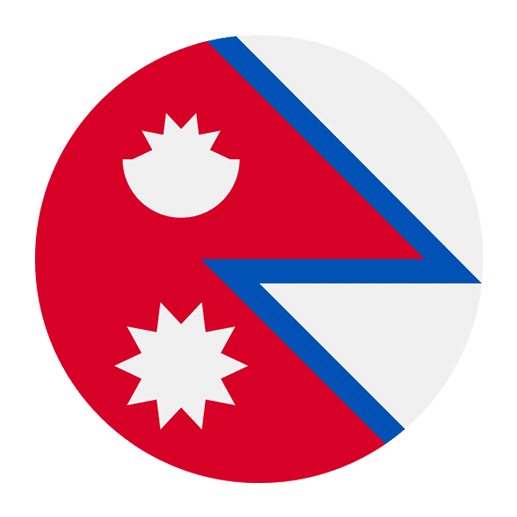Nepali, the official language of Nepal, is rich in culture, tradition, and expression. It is spoken by over 17 million people in Nepal and by Nepali-speaking communities across the world. For English speakers looking to communicate effectively in Nepali, learning common expressions can provide a solid foundation. These expressions can help you navigate daily conversations, understand cultural nuances, and build connections with Nepali speakers.
In this article, we will explore a variety of common expressions used in everyday Nepali. From greetings and pleasantries to asking for directions and making small talk, this guide will provide you with practical phrases to enhance your Nepali language skills.
Greetings and Pleasantries
One of the most essential parts of any language is knowing how to greet people and exchange pleasantries. In Nepali, greetings can vary based on the time of day and the relationship between the speakers.
Namaste (नमस्ते) – Hello / Goodbye
“Namaste” is the most common and versatile greeting in Nepali. It is used both to say hello and goodbye and is appropriate in almost any situation. It is often accompanied by a slight bow and hands pressed together in a prayer-like gesture.
Subha Prabhat (सुभप्रभात) – Good Morning
“Subha Prabhat” is used to wish someone a good morning. It is a polite way to start the day when greeting someone.
Subha Sandhya (सुभसन्ध्या) – Good Evening
“Subha Sandhya” is used to greet someone in the evening. It is similar to saying “good evening” in English.
Danyabad (धन्यवाद) – Thank You
Expressing gratitude is important in any culture. “Danyabad” is the standard way to say thank you in Nepali.
Kripaya (कृपया) – Please
“Kripaya” is used to add politeness to requests. It is the equivalent of saying “please” in English.
Introducing Yourself
When meeting new people, it’s helpful to know how to introduce yourself and ask about others.
Mero naam [your name] ho (मेरो नाम [तपाईको नाम] हो) – My name is [your name].
This is a straightforward way to introduce yourself. Simply replace “[your name]” with your actual name.
Tapai ko naam ke ho? (तपाईंको नाम के हो?) – What is your name?
Use this phrase to ask someone for their name.
Tapaiko umar kati ho? (तपाईंको उमेर कति हो?) – How old are you?
This is a common question when getting to know someone, although it may be considered personal in some contexts.
Ma [your country] bata aayeko ho (म [तपाईको देश] बाट आएको हो) – I am from [your country].
Use this phrase to tell someone where you are from.
Basic Conversation Starters
To engage in small talk, it’s useful to have a few conversation starters at your disposal.
Tapaiko din kasto cha? (तपाईंको दिन कस्तो छ?) – How is your day?
This is a friendly way to start a conversation.
Tapai lai kasto lagyo? (तपाईंलाई कस्तो लाग्यो?) – How do you feel about it?
This phrase can be used to ask for someone’s opinion or feelings about a particular subject.
Tapai ko pariwaar ma kati jana chhan? (तपाईंको परिवारमा कति जना छन्?) – How many people are there in your family?
This is a common question in Nepali culture, where family is very important.
Tapaile khana khanu bhayo? (तपाईंले खाना खानु भयो?) – Have you eaten?
This phrase is often used as a way of showing care and concern for someone.
Asking for Directions
Navigating a new place can be challenging, but knowing how to ask for directions can make it easier.
Yo kahan ho? (यो कहाँ हो?) – Where is this?
Use this phrase to ask for the location of a particular place.
Shauchalaya kata cha? (शौचालय कहाँ छ?) – Where is the bathroom?
Knowing how to ask for the bathroom is essential in any language.
Malai yo thau samma kasari janu parcha? (मलाई यो ठाउँसम्म कसरी जानु पर्छ?) – How do I get to this place?
This phrase can be used to ask for directions to a specific destination.
Yaha bata kati taadhaa chha? (यहाँबाट कति टाढा छ?) – How far is it from here?
Use this phrase to inquire about the distance to a particular location.
Shopping and Dining
Whether you’re shopping or dining out, these expressions will come in handy.
Yo kati ko ho? (यो कति को हो?) – How much is this?
This is a basic question you can use when shopping to ask about the price of an item.
Sasto bhayo? (सस्तो भयो?) – Can it be cheaper?
Bargaining is common in Nepali markets, and this phrase can help you negotiate prices.
Maasu chha? (मासु छ?) – Is there meat?
If you’re ordering food and want to know if a dish contains meat, use this question.
Yo mitho chha! (यो मिठो छ!) – This is delicious!
Compliment the food by saying “Yo mitho chha.”
Emergency Situations
In case of emergencies, knowing a few key phrases can be crucial.
Sahayog garnus! (सहयोग गर्नुहोस्!) – Help!
Use this urgent plea for assistance when you need immediate help.
Birami paryo (बिरामी पर्यो) – I’m sick.
This phrase can be used to inform someone that you are feeling unwell.
Police lai bolau! (पोलिसलाई बोलाऊ!) – Call the police!
In case of an emergency, this phrase can be used to request police assistance.
Aago lagyo! (आगो लाग्यो!) – Fire!
Shout this phrase to alert others in case of a fire.
Expressions of Time
Knowing how to talk about time is important in everyday conversations.
Kati bajyo? (कति बज्यो?) – What time is it?
Use this phrase to ask for the current time.
Ke tapai kalai aaunu hunchha? (के तपाईं कहिले आउनुहुन्छ?) – When will you come?
This phrase can be used to ask about someone’s arrival time.
Ma bholi aaunchu (म भोलि आउँछु) – I will come tomorrow.
Use this phrase to inform someone about your plans to visit the next day.
Shadji ko samay k ho? (शाद्जीको समय के हो?) – What is the time of the meeting?
Inquire about the time of a specific event or meeting with this phrase.
Common Polite Expressions
Politeness is an important aspect of Nepali culture. Here are a few expressions to help you navigate social interactions.
Maaf garnus (माफ गर्नुहोस्) – Excuse me / Sorry
“Maaf garnus” is a versatile phrase used to apologize or to get someone’s attention politely.
Thikai chha (ठीकै छ) – It’s okay
This phrase is used to reassure someone that everything is fine or to accept an apology.
Kripaya, ek chin parkhanus (कृपया, एक छिन पर्खनुहोस्) – Please wait a moment
Use this phrase to ask someone to wait for a short time.
Swaagat chha (स्वागत छ) – You are welcome
Respond to someone’s thanks with this polite expression.
Expressions of Emotion
Expressing your emotions accurately can help you communicate more effectively.
Malai khusi lagyo (मलाई खुसी लाग्यो) – I am happy
Use this phrase to express happiness.
Ma dukhi chu (म दुःखी छु) – I am sad
This phrase can be used to convey sadness.
Malai ris uthyo (मलाई रिस उठ्यो) – I am angry
Express anger with this phrase.
Ma chintit chu (म चिन्तित छु) – I am worried
Use this phrase to express worry or concern.
Common Questions
Being able to ask questions is crucial for effective communication.
Ke ho? (के हो?) – What is it?
This simple question can be used to ask about anything unfamiliar.
Kun thau? (कुन ठाउँ?) – Which place?
Use this phrase to ask for specific location details.
Kasari? (कसरी?) – How?
This one-word question can be used to ask about the method or way something is done.
Kina? (किन?) – Why?
Use this phrase to ask for reasons or explanations.
Expressions for Social Gatherings
Social gatherings are an important part of Nepali culture. Here are some phrases to help you participate.
Tapai lai bhetera khushi lagyo (तपाईंलाई भेटेर खुसी लाग्यो) – Nice to meet you
Use this phrase when meeting someone for the first time.
Yo kasto chha? (यो कस्तो छ?) – How is it?
This phrase can be used to ask for someone’s opinion about food, a place, or an event.
Yo mero mitra ho (यो मेरो मित्र हो) – This is my friend
Introduce a friend with this phrase.
Maile ramailo gari (मैले रमाइलो गरे) – I enjoyed it
Use this phrase to express that you had a good time.
Conclusion
Learning common expressions in Nepali can greatly enhance your ability to communicate and connect with Nepali speakers. These phrases will help you navigate everyday situations, from greeting people and making small talk to asking for directions and expressing emotions. Remember that language learning is a gradual process, and practice is key. Don’t be afraid to use these expressions in real-life conversations, as this will help you become more comfortable and confident in your Nepali language skills.
Whether you’re planning to visit Nepal, interact with Nepali-speaking communities, or simply expand your linguistic horizons, mastering these common expressions is a valuable step towards achieving your goals. Happy learning!

